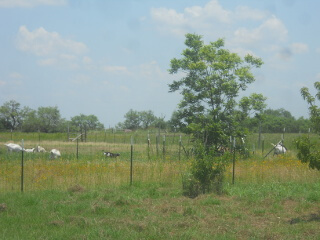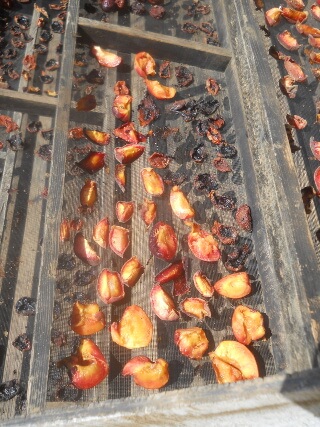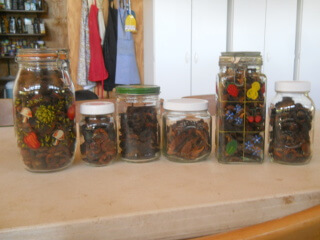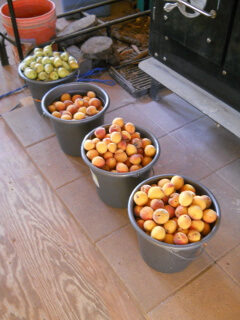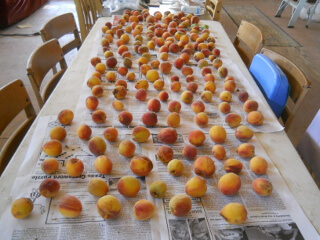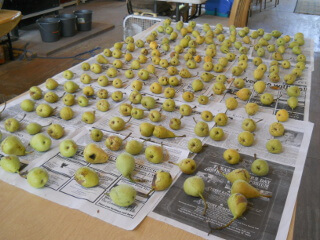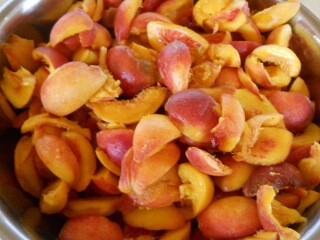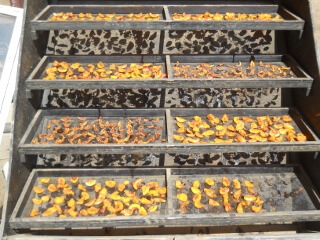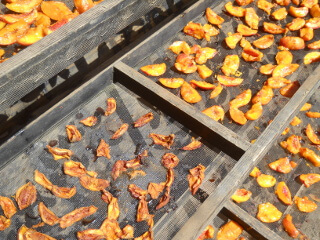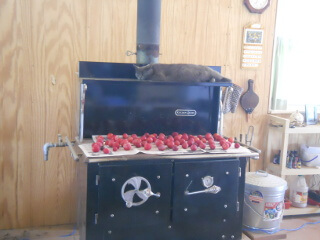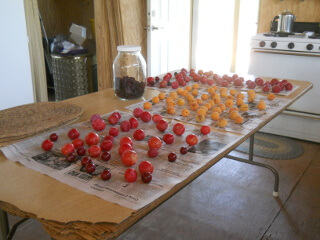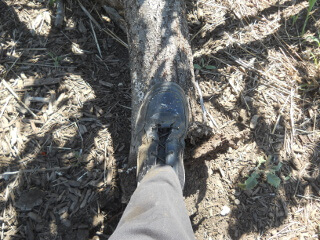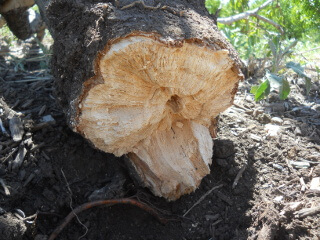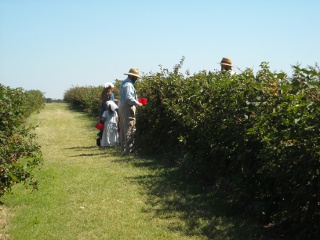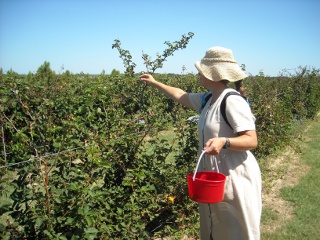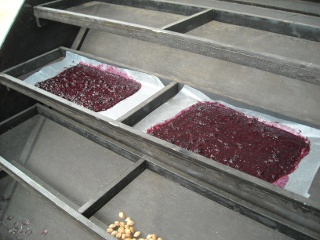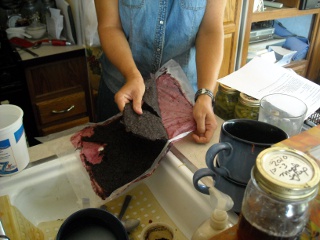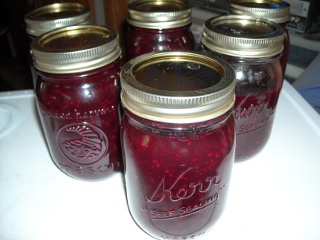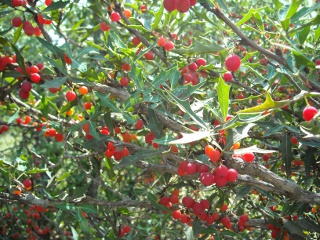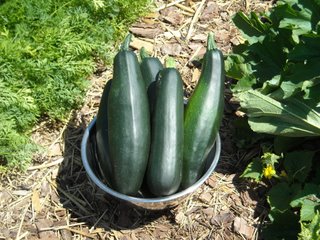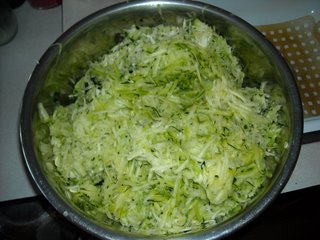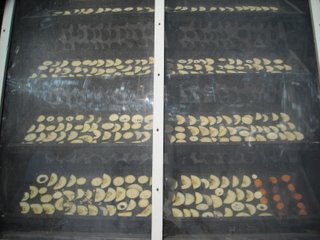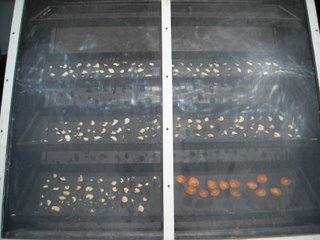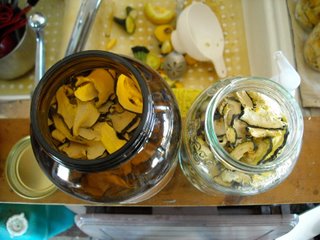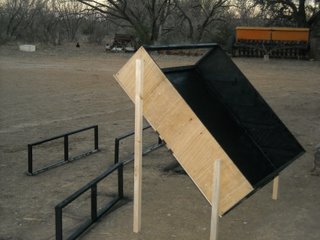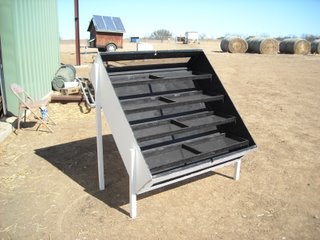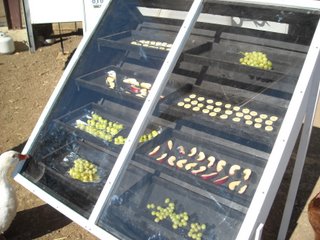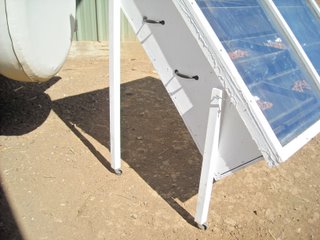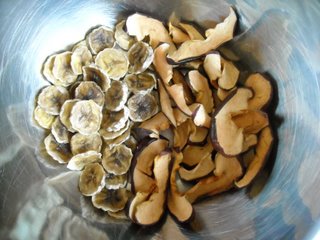With the previous two Winters being somewhat mild weather-wise, there wasn’t much activity with our fruit trees. However, this past Winter had quite a few more cold days, and I’m thinking that really made a difference, because by God’s graces we’ve had a very nice fruit bounty this Spring!
Here’s a current picture of the orchard, for which we are very thankful to the Lord:
So far, God has granted plums and the first apricots produced from a couple of our apricot trees. We’ve been extra diligent this year in getting to the fruit before the birds do as we’ve had trouble with that in the past. Thanks to Sue for going out there 3 times a day! Here they are ripening:
Here’s Mimi keeping guard over them….sort of. She’s really just keeping cool on a hot day! 🙂
And here are more plums with apricots ripening:
The easiest way for us to preserve the fruit is to dry them on our solar food dehydrator. It works very well, and we are thankful for it! In the past, we have ended up leaving the plums on too long, maybe to make sure they were dry, but they end up very stiff; and so, this year with them, we’ve made slices in the sides, to help hopefully dry them out thoroughly without going too far. It’s closer to what we do with fruit out of which we can remove the pit, like peaches:
And here is basically all of the dried fruit so far. We are very thankful to God for granting these provisions!
Finally, and sadly, earlier in the year, a storm knocked over one of our bigger trees:
You can see the size of it:
The inside of the trunk was almost like paper. I assume some sort of disease got to it. But, not much around here goes to waste typically, so it has become firewood for Winter time. We are thankful to the Lord for all of the fruit He has granted from this tree over time!
The peaches and nectarine trees have many fruit on them, and so we pray God keeps them and allows us to harvest them in due time. Interestingly, one of our newer trees has had probably 100 peaches on it, but I believe in keeping Lev 19:23-25, which says:
23 And when ye shall come into the land, and shall have planted all manner of trees for food, then ye shall count the fruit thereof as uncircumcised: three years shall it be as uncircumcised unto you: it shall not be eaten of.
24 But in the fourth year all the fruit thereof shall be holy to praise the Lord withal.
25 And in the fifth year shall ye eat of the fruit thereof, that it may yield unto you the increase thereof: I am the Lord your God.
And, besides this being in the Bible, Puritan commentator John Gill, on the end of vs 23, says:
which was a provision partly for the benefit of fruit trees newly planted, whose fruit, when they first bear, gardeners frequently take off immediately, and do not suffer them to grow to any perfection, by which means a tree will grow stronger, and will bear more and better fruit another year; and partly for the health of man, which physical reason is given by Aben Ezra, who observes that the fruit that comes unto the third year there is no profit by it, but is hurtful; and chiefly because, as it is proper that the first fruits should be given to the Lord before any is eaten, so it is right that it should be given seasonably, and when it is brought to its perfection: three years were to be reckoned, as Jarchi and Ben Gersom say, from the time the tree was planted.
And Matthew Henry says:
3. We are hereby taught not to be over-hasty in catching at any comfort, but to be willing with patience to wait the time for the enjoyment of it, and particularly to acknowledge ourselves unworthy of the increase of the earth, our right to the fruits of which was forfeited by our first parents eating forbidden fruit, and we are restored to it only by the word of God and prayer, 1 Tim. 4:5
Now, since the priesthood is no more, some might argue the whole command has gone away, but for me, I look at it as the 4th year going away, and we still wait for after 3 years to harvest from a tree, discarding any fruit during those 3 years. Needless to say, it has been a little difficult to toss down so many, but we pray God glorifies Himself through these things.
Again, we are very thankful to the Lord for granting these provisions! May we bear much fruit, the fruit of His Spirit, by the graces He supplies to us!
— David



